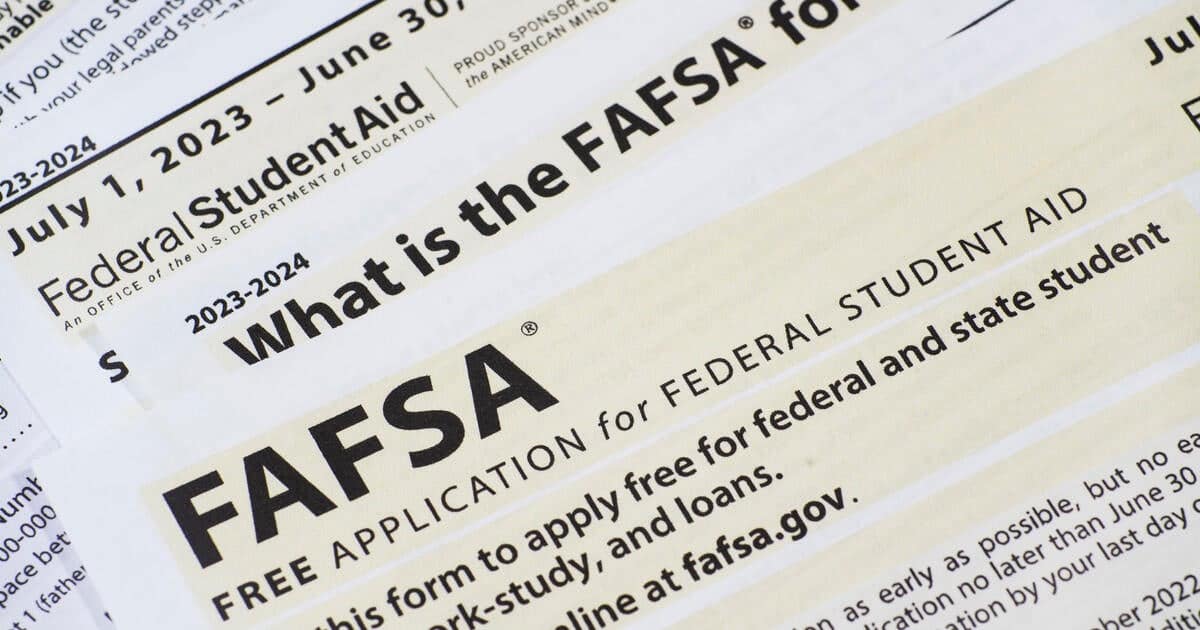
The U.S. Department of Education could be headed for some major changes, with President Trump expected to issue an executive order directing Education Secretary Linda McMahon to start the process of dissolving the agency.
Although the timing of such a move is unclear, reports that is in the works are already raising questions for millions of parents, students and taxpayers about the future of the Education Department and how the services it provides will be handled if the agency is dismantled.
What does the Department of Education do?
The Education Department’s key functions include:
- Disbursing billions in student loans each year
- Operating the Free Application for Federal Student Aid, or FAFSA, which allows students to apply for loans, grants and other college aid
- Providing funding to help poor and disabled students enrolled in K-12 schools
- Ensuring equal access to education through its Office of Civil Rights
- Operating the Pell grant program, which provides qualifying low- and middle-income students with up to $7,400 per year to attend college
- Funding public charter schools
- Overseeing the the college accreditation system by reviewing all federally recognized accrediting agencies
- Collecting data on education and student outcomes, from early to higher education
The Department of Education is “primarily about ensuring who can access the classroom — it’s not so much about what is being talked about in the classroom,” Peter Granville, a fellow at The Century Foundation and expert on higher education, told CBS MoneyWatch.
One major misconception held by many Americans is that the Education Department oversees school curriculums and learning, which are instead overseen by states and local school districts. Rather than setting public school curriculums, the Education Department’s role is primarily financial, distributing billions in government money to colleges and schools and managing the federal student loan portfolio.
“Curriculum is handled by states and local governance — the Department of Education has historically had no role in setting curriculum,” Granville said. “The primary role of the Department of Education has been as a grant maker and a loan lender.”
For instance, the Education Department operates the Free Application for Federal Student Aid, or FAFSA, which is used by about 17 million students each year to apply for federal loans, grants and scholarships to attend college or vocational programs. The agency also manages $1.5 trillion in student loans, including repayment programs.
Additionally, the Education Department handles Title I funding for low-income schools as well as for the Individuals with Disabilities Education Act. Here’s what to know about the agency.
Why does the Trump administration want to close the Education Department?
Mr. Trump is a vocal critic of the Education Department, describing it last month as “a big con job” and falsely claiming the U.S. is ranked 40th in education internationally but spends the most per pupil. (Spending on K-12 education is largely determined by local school boards and funded by property taxes.)
One of the president’s executive orders, signed Jan. 30, directed the Education Department to investigate “school choice programs,” saying that parents need “opportunities for students to attend the school that best fits their needs.” Vouchers that allow families to pay for private K-12 schools are a priority of conservatives, as such programs allow parents to use tax credits to pay for private schools, including Christian-based institutions.
In an email earlier this month to the agency’s staff entitled “Our Department’s Final Mission,” McMahon wrote that her goal is to “restore the rightful role of state oversight in education and to end the overreach from Washington.” That echoes language from Project 2025, the blueprint for a conservative administration written by the Heritage Foundation.
“Federal money is inevitably accompanied by rules and regulations that keep the influx of funds from having much, if any, impact on student outcomes,” Project 2025’s section on the Education Department claims. “Eventually, policymaking and funding should take place at the state and local level, closest to the affected families.”
Can Mr. Trump abolish the Education Department?
Complete elimination of the Education Department would need congressional approval and 60 votes in the Senate, which is unlikely given the current makeup.
However, the Trump administration could make changes to the agency, such as by cutting staff, without closing the entire department. The Trump administration is currently making massive employment cuts at several other federal agencies, such as the Social Security Administration and Veterans Affairs Department, describing the efforts as a way to reduce federal waste.
The Trump administration could change some of the department’s oversight duties, such as those carried out by its Office for Civil Rights, which issues guidance on how civil rights laws should be applied. Trump has suggested a different interpretation of the office’s civil rights role.
Under his administration, the department has instructed the office to prioritize complaints of antisemitism, and has opened investigations into colleges and school sports leagues for allowing transgender athletes to compete on women’s teams, according to the Associated Press.
The Trump administration isn’t expected to defend the Biden administration’s student loan forgiveness and repayment programs, which have been tied up in court cases, experts say. Last month, the Education Department removed the online application for income-driven repayment plans, according to Business Insider.
What would happen to student loans?
The Education Department manages $1.5 trillion in student loan debt for more than 40 million borrowers. Although the Trump administration hasn’t outlined how it might want to reallocate the Education Department’s responsibilities, student loans could be moved to the Treasury Department, Granville noted.
“If this is going to be a smooth handoff, some other agency has to pick up what the Education Department is setting down,” he said. “The most logical destination is the Treasury, but I worry about the risk of disruption from any handoff.”
Project 2025 posits that student loans should be handled by a “new government corporation with professional governance and management.” The blueprint calls for federal loans “to be assigned directly to the Treasury Department, which would manage collections.”
Project 2025 also favors phasing out income-based repayment plans, which help borrowers lower their monthly loan payments by making them proportional to their wages and salaries, and creating a new repayment plan that would require people earning above poverty wages to pay 10% of their income toward their loans.
“[T]here should be no loan forgiveness,” Project 2025 states.
What would happen to the FAFSA if the Education Department is abolished?
The Education Department required by law to release the FAFSA on or close to Oct. 1, allowing students and their families to apply for loans and other student aid during the college application season. Families must complete the FAFSA each year a student is enrolled in a college program if they wish to qualify for loans or other aid.
“Congress passed a law that created the FAFSA, and unless Congress creates a new law, the FAFSA has to continue,” Granville said.
Still, it’s unclear which agency would handle the FAFSA if the Department of Education is dismantled, he added.
What would happen to federal funding for public K-12 schools?
Much of the Education Department’s money for K-12 schools is funneled through large federal programs, such as Title I for low-income schools and the Individuals with Disabilities Education Act. Those programs support services for students with disabilities, smaller class sizes with additional teaching positions, and pay for social workers and other non-teaching roles in schools.
During his campaign, Mr. Trump called for shifting those functions to the states. He has not offered details on how the agency’s core functions of sending federal money to local districts and schools would be handled.
Project 2025 suggests sending oversight of programs for kids with disabilities and low-income children first to the Department of Health and Human Services, before eventually phasing out the funding and converting it to no-strings-attached grants to states.
What do educators and Democrats say?
There’s concern that making massive changes to the Education Department could impact millions of families and students who rely on the agency for loans, grants and other support, experts say.
Moving some of those tasks to states and local governments could drive up costs for many families, said Sen. Bernie Sanders, an independent from Vermont.
“That will mean higher local and state taxes to fill the void,” Sanders said at a Thursday press conference organized by the Senate Democrats about the potential dismantling of the Education Department. “In other words, shutting down the Department of Education would be a disaster for low income and working class families in every state of our country.”
The American Federation of Teachers, a union that represents 1.8 million K-12 teachers, said that it planned to fight the Trump administration’s efforts to dismantle the agency.
“The directive to ‘return decision-making to the states’ fails the smell test,” said AFT President Randi Weingarten in a statement. “States and districts already govern schools through locally elected school boards, as they should. They put up most of the money and control most of the decisions—from approving curriculum to deciding who graduates.”
She added, “The Department of Education, and the laws it is supposed to execute, has one major purpose: to level the playing field and fill opportunity gaps to help every child in America succeed.”
contributed to this report.









